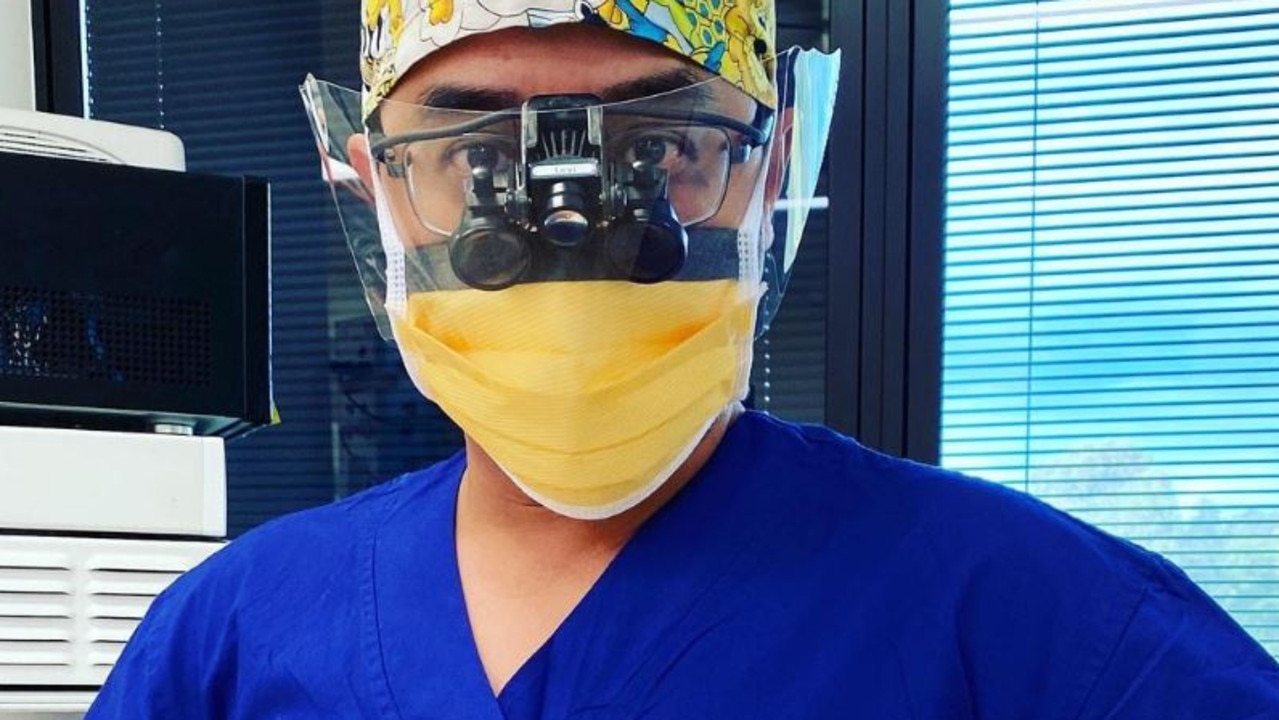How to take a Covid rapid antigen test and why you may be doing it wrong
With many Aussies now relying on home rapid antigen tests, a leading doctor reveals how you should be taking the test – and why many of us are doing it wrong.
With millions of Aussies relying on a Covid rapid antigen test kit at home, many of us think we’re testing pros by now.
But according to a Melbourne-based ear nose and throat surgeon Dr Eric Levi, you may be performing the dreaded nasal swab all wrong.
Dr Levi explains why you may be doing them wrong, and how to do the test properly.
HOW DO YOU SWAB YOUR NOSE PROPERLY WITH A RAPID ANTIGEN TEST KIT?
“The nose goes back, not up. Lots of diagrams show the swab heading upwards which can be painful. Anatomically speaking, you need to go lower and deeper towards the back,” Dr Levi said.
“That will give you more mucous and mucosal tissue with less pain.
“Going slowly will also be better. Quick movements are registered as pain by the nose.
Happy 2022.
— Dr Eric Levi (@DrEricLevi) December 31, 2021
May you swab your nose anatomically correctly this year. pic.twitter.com/SI3UnM99xN
WHAT IF YOU COME BACK WITH A NEGATIVE RESULT, BUT MAY BE FEELING SOME SYMPTOMS?
“Given the prevalence of Covid in our community currently, if you are symptomatic, assume that you have Covid,” Dr Levi said.
“If the results are negative but you have symptoms, we have to assume that the result may be false. I‘d recommend repeating the following day while keeping yourself isolated.”

CAN YOUR RESULTS BE WRONG?
“Yes it could be a false negative, meaning you do have Covid but the result has not turned positive because either there is not enough viral materials being shed or captured on the swab,” Dr Levi said.
“It is very unlikely for the test to be false positive.”
HOW TO TEST KIDS PROPERLY
What are the common mistakes people are making when taking the test? And are there any signs that indicate you may have done it wrong?
“Most common mistake is thinking that it‘s going to be painful. Doing it slowly and well will not cause pain. Going too superficially is not enough and going too high can be dangerous,” Dr Levi said.
“The front of the nose is lined with dry hairy skin. The test is meant to capture mucosa and viruses lining the mucosa and mucous of the nose.
“So the tip has to go in further than just the hairy bit of the nostril. 2-3cm in, low and slow with circular motion for 15 seconds or so will help ensure you are sampling the right mucosa.”
How do you do a Rapid Antigen Test on a child?
— Dr Eric Levi (@DrEricLevi) January 10, 2022
Here you go! (Quick vid due to time)
Wash hands, blow nose.
Kid’s head on arm/pillow.
Swab hand resting on chin or cheek in case sudden moves.
GO LOW, GO SLOW.
Gentle twirl 1-2cm for 10-15 seconds.
Do other side.
Take care! pic.twitter.com/zfnGFlHlTp
HOW DO YOU PROPERLY TAKE THE TEST FOR KIDS?
“Kids might prefer the saliva test, but nasal test is not painful when done correctly. Same technique, going low and going really slowly. 1-2cm in. Head in your arms or resting on a sofa or pillow,” Dr Levi said.
“The testing hand stabilising on cheek or lip so that when the kid moves suddenly, the swab stick won’t hurt the kid.”
HOW SHOULD YOU STORE THE TEST?
Chief executive officer of All Cast PPE, Scott Huntsman —who supplies Covid antigen tests for companies like Officeworks and other major retailers — said storing the test at home is crucial in ensuring it doesn’t impact the results.
“The tests must be stored in temperatures between 2 and 30 degrees. If they are not, they can be compromised and become defective - delivering a false outcome,” he said.
“Keep them in a dry cool place, the fridge is ideal. Take a test out of the fridge 30 minutes before you use it.
“Don’t leave them in your car. Cars heat up quickly and destroy the effectiveness of tests fast.”
Mr Huntsman said people should only purchase a test from a “reputable business or retailer”.
“Don’t purchase from outlets that may not have the expertise to manage a medical product,” he said.
“Do not purchase any multiple test kits that have been broken up into single test units - as some unscrupulous outlets have been doing. Tests are medical products and breaking the seal of a whole kit renders all of the items within useless.
“And finally, if you need the result for reporting purposes, take a photo.”
WHAT SHOULD YOU AVOID WHEN TAKING THE TEST?
“Just follow the instructions carefully. Different kits have different instructions,” Dr Levi said.
“Remember that all RATs are good and have been approved. Some are more sensitive than others. Be careful with the ones bought online, make sure they're one of the ones TGA approved.
“Do not ever push the swab against hard resistance. If it’s painful, stop.”
DO RAPID ANTIGEN TESTS DIFFER?
“Yes there are two kinds (21 brands in total) that are TGA approved in Australia: a nasal swab and an oral saliva fluid (not a throat swab),” Dr Levi said.
“Nasal swabs are well known. Saliva test is different. You have to be fasted for a period of time (depending on the brand), cough into your mouth, and then spit into a container or have a lollipop in the mouth.
“Both kinds also have specific instructions on when you should read the test. Some brands say they read between 10-15 minutes and it’s not valid after 15min.
“Others say it is read between 15-30min and invalid after 30min. Be careful of interpreting the test results too. At this stage using a nose swab in the throat is not validated yet.”






